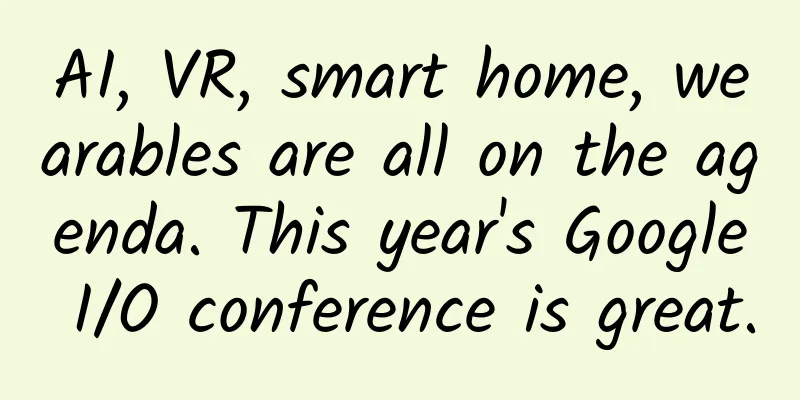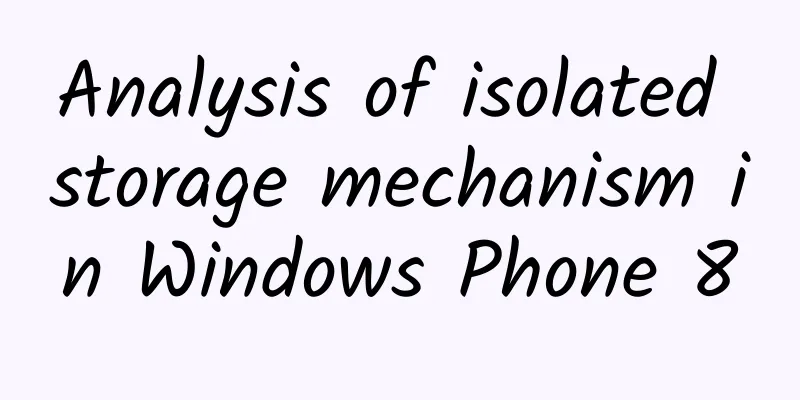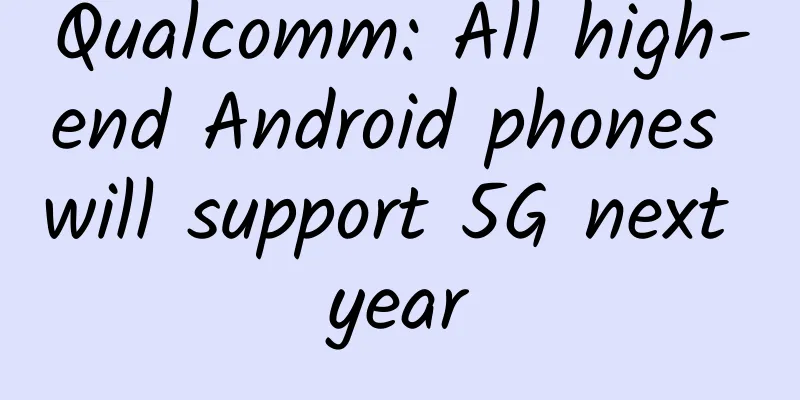AI, VR, smart home, wearables are all on the agenda. This year's Google I/O conference is great.

|
Google I/O conference opened amid the eager anticipation of global developers, Google fans, Android manufacturers and competitors. I/O conference has been held for 9 consecutive years, and has released many well-known products such as Android, Chrome, ChromeBook, Nexus 7, Google Glass, Cardboard, etc. What impressed me most was the amazing move of Google employees wearing Google Glass and falling from the sky to the stage at I/O conference. It couldn't be cooler. The 2016 I/O conference is of even greater significance. New waves of industries such as VR and driverless cars are in the ascendant, while the mobile phone industry, which is facing bottlenecks, urgently needs big brother Google to point out the direction... And Google has attached unprecedented importance to this I/O conference, moving the venue to the gate of Google headquarters: the Shoreline Amphitheater in Mountain View, and moving from indoors to an open-air venue. Once again, Google has lived up to expectations and met some of them. Although some products didn't arrive as expected, Google made up for it with other products. Let’s take a look at the major announcements at the Google I/O conference: Google Assistant: A smarter Google Now Perhaps Google thinks that Google Now is not smart enough to meet all the needs of people for natural interaction with machines, so it upgraded it and launched Google Assistant.
60% of Google searches come from mobile devices, and 20% of searches come from voice (its Chinese follower Baidu has announced a similar mobile search ratio, but has not announced a voice search ratio, so Google should be ahead). Google Assistant mainly processes voice searches, and it can do more. As its name suggests, it can interact with you in a conversation like an assistant, rather than a single voice recognition and response. It is smarter and can accomplish more. In addition to supporting Android phones, Google Assistant can also be used in smart homes, smart watches, smart cars and other scenarios - it is still benchmarked against Apple Siri, Amazon Alexa (formerly known as Echo) and Microsoft Cortana, while Chinese manufacturer Baidu has DuerOS. Google Assistant already supports services Voice assistants were first introduced to the world by Apple through Siri. It has to be said that in the first few years, Siri was not considered "intelligent". It often became a toy for users to tease. It had poor recognition ability and could do few things. It was good enough to check the weather. In recent years, with the development of voice technology and artificial intelligence technology, Siri has become smarter and smarter. It can recognize more voices, conduct multiple rounds of conversations, and complete many tasks. It has begun to become practical. Google's AlphaGo's victory over top Go players demonstrated its leading position in artificial intelligence. By combining AI achievements with voice and search, the future of Google Assistant is promising. Google Home: The hardware version of Google Assistant Google has released a new smart home product: Google Home. This is a home hardware with a built-in Google Assistant. Just like Amazon's Echo, it is not only a smart speaker, but also a hardware assistant that can shop and turn on lights, with a built-in voice assistant software called Alexa.
Google Home. Image from The Verge Google Home can call a taxi, order takeout, conduct voice search and get voice results. In the future, it should be able to turn on lights, cook, and download movies. Google Home is open to smart home and software service manufacturers to realize rich functions... In short, the idea is similar to Amazon Alexa, which is to free users from keyboards and screens at home, cook while surfing the Internet, have sex while replying to the boss's email (so dirty)... Prior to this, Google has done a lot of exploration in smart home.
Now Google Home is here. Google, which started out as a search engine, is returning to search in the smart home (voice assistants are essentially mobile searches) and seeking to gain access to the home. Judging from the success of Amazon Alexa, Google Home still has a good chance. Based on its advantages in artificial intelligence, it will pose a threat to Amazon Alexa when combined with popular devices such as ChromeCast, Nest, and Dropcam. Google Allo: WeChat that can pretend to chat Google Allo (read with me: love) can be seen as an upgraded version of Messenger. It realizes instant communication based on Google contacts and supports emoticons, pictures, etc. The biggest highlight is the integration of Google's intelligent technology. For example, when you receive a puppy picture sent by a friend, Allo can "pretend" to comment "a cute puppy" (seemingly very boring). It can also automatically push some common answers based on the context of the message you received, improving your chat efficiency...
Google Allo is integrated with Google Assistant, and users can wake up Allo and send messages through voice. At the same time, Google is also launching a companion video app to Allo called Duo (which means duet in English and is pronounced du-ou, not duo), a video chat app that has little fanfare. Duo will be available to Android and iOS users this summer.
In general, Allo is a product that follows Google's consistent style: it hopes to help you accomplish as many things as possible. The reason for this is that Google has always emphasized the application of artificial intelligence technology. When Google's founder founded the company, he said that Google is not a search company, but an "artificial intelligence company." Android N: We're really working on innovation (cry)! Android N was not the focus of this I/O conference. As early as March this year, the first preview version of Android N was released to us. Today, Google released a small amount of information: 1. In terms of performance, Android N integrates Vulkan, an upgraded version of OpenGL, which will reduce the requirements of games on the GPU and improve game performance; a JIT compiler is added, which increases compilation performance by 75%, making the installation process 75% faster; 2. In terms of security, Android N has added a file encryption function, and the mobile version of Chrome can identify malicious websites (this function does not seem to be easy to use, with a high misidentification rate, which makes it inconvenient to visit adult websites in many cases). In addition, Google Play has created a SafetyNet security network to ensure the security and reliability of apps from the cloud; 3. In terms of productivity, Android N also makes a difference, supporting double-clicking the interface to switch apps, picture-in-picture function, application split-screen function, and quick reply in the notification center (iOS has already supported this); There isn't much to see in Android N, after all, a preview version has already been released. As the seventh major version of Android, it has become difficult to make significant innovations in "functions". It is more focused on performance and security, and "productivity" optimization is the card that all mobile OS are playing. Once the life scenarios are well met, they will rush to the work scenarios. Compared with iPad Pro and Surface, two productivity tools based on "stylus + physical keyboard", Android N has made little progress, and it is also dwarfed by Windows' Continuum mode (which turns a phone into a computer host). In the matter of productivity tools, Google should still be preparing a big move, perhaps pinning its hopes on ChromeOS? Interestingly, Google emphasized that the inspiration for Android N mainly comes from user feedback. The most difficult part of this year's Android version is naming, which will be based on user voting... This approach made Lei Xiaobian (WeChat ID: leitech) think of Xiaomi. Isn't this the Internet thinking advocated by Chinese manufacturers? Android VR failed, but there is Daydream.VR platform Before the I/O conference, well-known foreign technology media vowed that Google would definitely release a mid-range VR device - Android VR. Today the answer is revealed: it’s a lie. Google I/O did touch on VR. It announced that CardBoard, a cheap version of VR device, has over 50 million installed apps, Android N has clearly added VR mode, and more importantly, Google released the VR platform Daydream.VR. Unlike VR platforms such as Oculus Home, Daydream is not a VR content platform, but a set of standard solutions for producing VR content and applications based on Android. It can effectively reduce latency and dizziness, supports smartphones, and can reduce performance to below 20ms. Based on Android N, it is applicable to a large number of mobile phone brands, so that users can select "VR mode" on these phones through VR boxes in the future, and have a better experience when watching VR content - but the hard condition of 2K still requires the efforts of mobile phone manufacturers themselves. Xiaomi previously hyped that it would appear at Google I/O, and it did appear, as shown below: Mobile phone manufacturers that Daydream.VR will support At present, Daydream has many partner apps, including well-known content platforms such as HULU and Netflix, and apps such as Google Street View support Daydream.VR. Users can watch movies, play games, and view street views through apps compatible with Daydream.VR and equipped with Android N phones, and will have a better VR experience. Daydream VR is an open VR solution. It is not an OS for VR devices because it is based on Android N. However, in the future, Daydream VR may evolve into a more independent system, similar to Android Wear. Daydream.VR will be officially launched this fall.
Daydream.VR supports head-mounted devices. Google provides a reference product for this (similar to the value of Nexus products to Android). This is a pure white product with a simple controller. It should be the legendary Android VR. It is indeed more refined than CardBoard, but it still feels relatively simple. Google has not officially released this product yet, so it may take some time for it to be unveiled. Google's launch of an open VR solution that supports both mobile phones and helmets is a big step for the VR industry. It at least shows that Google has the ambition to create standards and systems for VR, which no giant has done before. This will push mobile phones, apps, and content players to unify the VR experience. Given that the VR experience based on mobile phones is still too poor, how Google's VR helmet will work will be another suspense left in the Google world. Android Wear 2.0 released, can be used independently of the phone In 2014, Android Wear was officially released, but the system was not widely used. In addition to Moto360 and Huawei Watch, another star smartwatch, Samsung Gear, adopted its own Tizen system. Compared with smart bracelets and smartphones, the smartwatch market has not been opened up. The big brother Apple Watch finally sold tens of millions of units, but in the first quarter of this year, it experienced a sharp decline of more than 60%. So, everyone is still confused about the future of smart watches. After a minor update at last year's I/O conference, Android Wear released version 2.0 at the I/O conference. At the time of the release, Google said that after the lessons learned in the past two years, it finally understood people's needs for smart watches. Well, this speed is really a bit slow. In the new version, smart reply, handwriting recognition and a new automatic keyboard are added. Smart reply is a point that has been repeatedly emphasized at this I/O conference. Watches that are not convenient for input are more in demand, so this function is still quite attractive. Even if you need to input, handwriting or automatic keyboards through Android Wear 2.0 are more efficient because they both use machine learning technology at the bottom. The biggest highlight is that Android Wear 2.0 watches can be used independently of mobile phones. It supports the watch to use cellular networks and WIFI networks, play local music independently, and record exercise data independently. It optimizes the exercise recording algorithm and is connected to the Google Fit API interface to support nutrition applications and Bluetooth music. The Android Wear 2.0 developer preview is now available, but the official version will not be released to users until this fall. In addition to the six products closely related to consumers, namely Google Assistant, Google Home, Google Allo (and Duo), Android N, DayDream.VR and Android Wear 2.0, Google has also released tools such as Studio2.0 and Firebase for developers, and has devoted more space to the App form based on H5 technology, namely Android Instant Apps. This application is based on the cloud, does not require installation, and what you see is what you get. It is the core concept of ChromeOS and may appear more and more on Android in the future, and all this is transparent to users. Although Google I/O 2016 did not have any "brand new products" like Google Glass and Google's driverless car, it was still very good. From this conference, we can see Google's future focus: 1. Artificial intelligence will become the "blood" of Google's business. This I/O conference allowed users to deeply feel the application of AI technology. For example, Google Assistant and Google Home are typical artificial intelligence applications. Google Allo and Android Wear 2.0 have begun to introduce the concept of "assistant". Google is trying to help users do more things. AlphaGo has pushed Google to the altar of artificial intelligence. Now Google is applying the cutting-edge artificial intelligence technologies it has mastered to more products to benefit users. Recently, Sundar Pichai said in a recent open letter that the world will change from "mobile device first" to "artificial intelligence first". The I/O conference shows that Google is taking rapid action on this worldview.
2. Google’s attitude towards VR is to be a standard setter. Google is very positive about VR. At last year's I/O conference, it launched CardBoard and made it open source to help VR become popular quickly. This is completely different from the wait-and-see attitude of Amazon and Apple, and Microsoft's betting on AR (augmented reality). Although Google did not make heavy VR products as expected at this I/O conference, the launch of a standard solution such as Daydream.VR is more practical for the VR industry than making a device. Which is more important, Android or Nexus phones? The answer is obviously Android. Making VR devices will only be a means for Google to promote standards, not an end, which is very different from Facebook's bet on Oculus. Therefore, although Android VR did not come, Google, which had a "daydream", did not disappoint. It regards VR as a long-term investment and will play the role of Android in the smartphone industry. 3. Why are there no cars? Because I/O conferences don’t brag. This time, Google did not release any news related to Google's driverless cars as many people expected - instead, it focused on four major areas: mobile phones, home, wearables and VR, and AI technology was used throughout. There was almost no mention of cars. Does Google not value cars? The answer is no. Google is the most radical player in driverless cars. It did not talk about driverless cars perhaps because this business is still far away from consumers, and the background of the I/O conference is a developer conference. What Google announced is closely related to developers. What can developers do with driverless cars now? Nothing. Therefore, it is not surprising that Google did not mention cars at the I/O conference. To summarize: Google I/O did not bring many surprises, but it still reflected the strong Google style. This conference released VR solutions that are more important than devices, released software and hardware closely related to artificial intelligence, as well as Android Wear 2.0, Android N and a large number of developer tools, all of which show that Google's ambition has never been a product, but a real ecosystem that everyone can play with. From Android to Chrome to Daydream.VR, it reveals a strong Google sentiment - this Google I/O conference is great. |
Recommend
A guide to acquiring customers through Tik Tok information flow advertising!
Douyin information flow ads refer to the ads that...
APP new users and retention analysis!
01 New User If you have read the first article in...
Tofu becomes a popular meat substitute in the United States! What exactly happened? Attached is the latest epidemic situation
During the COVID-19 pandemic, a large number of f...
Bian Lichun: The Space Folding of Home
Bian Lichun's space folding technique resourc...
iOS 13.3.1 update: Location function can be completely turned off, photo taking speed increased
Although it was more than 40 days since the previ...
Data rankings of 60 information flow advertising platforms!
Today I bring you the latest traffic rankings of ...
SEO is not a cheating method
In the past two years, SEO has received more and ...
Maizi Interactive Entertainment short video sales · 0 basics to create a product sharing account, no need to appear on camera, no need to source goods, no need to shoot
Maizi Interactive Entertainment short video sales...
How to build a user reach system?
The connotation of user growth lies in "user...
Luo Yuan's "Ukulele Lessons You Can Learn Even with No Basic Knowledge" is a good introduction to musical instruments for children
Luo Yuan's "Ukulele Lessons You Can Lear...
Traffic surges during the epidemic, how to place online advertisements?
In the Internet age, advertisements are everywher...
How much does it cost to develop a WeChat mini program live broadcast? How much does it cost to develop a live streaming app?
The epidemic in 2020 has prevented many offline c...
A perfect event planning plan cannot be without these elements!
Do you hope that the event will become a hit? Tha...
Lanzhou takeaway platform applet development, what are the advantages of catering takeaway applet?
Soon after the beginning of the year, epidemics b...
How to achieve "real sales" KOL marketing in 2 steps?
Unilever CMO Keith Weed announced at the recent C...









